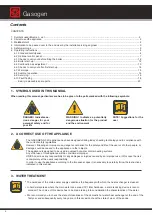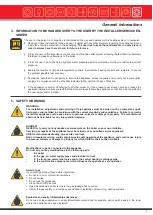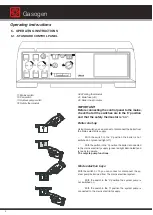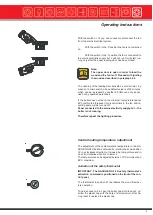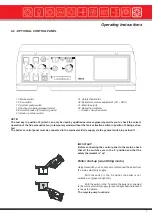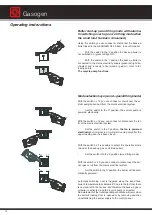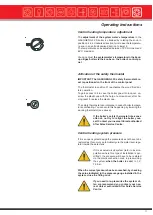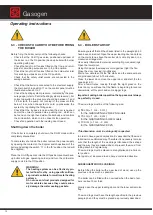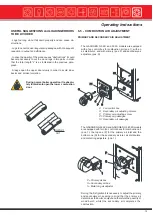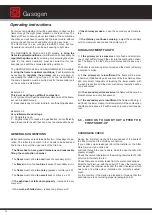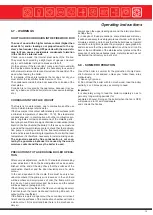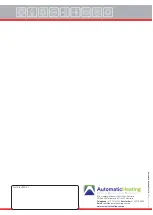
15
Operating instructions
6.7 - WARNINGS
HOW TO AVOID CORROSION IN THE FIRE WOOD BOX
The use of wood with a high moisture content (higher than
about 25%) and/or loadings not proportioned to the sy-
stem’s heat request (long OFF periods with the wood sto-
rage full) can cause considerable condensate formation
in the fire box’s internal wall.
Check, once a week, the internal steel walls of the fire box.
They must be covered by a slight layer of opaque coloured,
dry tar, with bubbles inclined to break and fall off.
On the contrary, if the tar is bright, runny and, if removed with
the fire stoke, some liquid appears, it is necessary to use wood
with a lower moisture content and/or reduce the quantity of the
wood when loading the boiler.
If, in despite of these interventions the tar does not dry, you
must inform the local After Sales Service of this.
The condensate inside the fire box causes the corrosion of the
steel plates.
Corrosion is not covered by the guarantee, because it is cau-
sed by a bad use of the boiler (wet wood, excessive loadings,
etc.).
CORROSION IN THE FLUE CIRCUIT
The flue is rich in water steam, due to combustion and the use
of wood which always retains water.
If the flue comes into contact with relatively cold surfaces (with
a minimum temperature of about 60 - 70 °C), the steam water
condensates and, in combination with other combustion pro-
ducts, originates corrosion phenomena of the metallic parts.
Every day check if there are signs of smoke condensation (black
liquid on the floor, behind the boiler). In this case you must use
a wood with a lower moisture content; check that the recircula-
tion pump is working correctly, the flue temperature at part
load, and increase the working temperature. To control the room
temperature it is therefore necessary to install a mixing valve.
The corrosion caused by flue condensation is not cove-
red by the guarantee, because it is caused by the wood’s
moisture content and the way the boiler is used.
PRECAUTIONS TO TAKE DURING BOILER OPERA-
TION
After every air adjustment , wait 5 to 10 minutes before making
a new adjustment. Once the best adjustment has been esta-
blished, at the end of the day check that the surfaces of the
combustion chamber and the door insulation are of a white
colour.
In the ash deposited in the cradle there must be only a few
unburnt embers. If the primary air is in excess, in the ash there
will be embers and small pieces of coal, the flame will burn
fast, be dry, have a cold colour and be noisier, and the output
will be excessive (paragraph 6.5).
If the primary air is insufficient the flame burn slowly, be small,
it will not touch the lower cradle and it will drag little ash; the
output will be insufficient.
If the flame is a dark orange colour, the secondary air is insuf-
ficient and the surfaces of the combustion chamber will not be
a white colour; if it is small and blue there is too much secon-
dary air.
Always open the upper loading door and the internal antismo-
ke flap slowly.
If, in despite of these precautions, some blow back will occur,
it will be necessary to use bigger pieces of wood, with a higher
moisture content, and to check that the boiler does not remain
unused for a long time (reduce the primary air - paragraph 6.5)
and make sure that the possible distortion of the cast iron fire
bars or the modification of the stainless steel grates or that the
presence of extraneous bodies (nails, metallic pieces) has not
obstructed the refractory burner’s slot.
6.8 - SUMMER OPERATION
Use of the boiler in summer for the production of only dome-
stic hot water is not advised, unless you follow these rules
meticulously:
1) Use very dry wood
2) Do not load the boiler with too much wood, load the boiler
partially, 2 or 3 times per day ,according to need.
Important.
It is absolutely wrong to load the boiler completely so as to
gain very long working periods (for
example 24 hours). Doing so the boiler (when the fan is OFF)
will produce a lot of acid condensate
and corrode the fire box.


